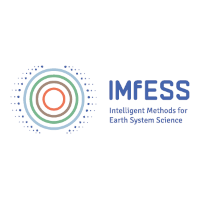"Estimating the forecast benefit of observations through ensembles"
The skill of a numerical weather forecast is tightly linked to the observing network used to estimate the forecast’s initial conditions. To optimize this observing network, forecast centers are continuously trying to estimate both the benefit of current observations as well as the potential benefit of adding new observations to the network. For ensemble forecast systems, both can be estimated computationally efficiently by assuming a linear relationship between ensemble deviations of the initial state and a forecast quantity of choice. An important aspect of these methods that has yet to receive much attention is that they need to be provided with estimates of signal propagation, i.e., how the impacts of observations spread through the atmosphere over time. In this talk, I will illustrate these methods, their potential, and the importance of signal propagation using a simplified 1D toymodel, and show results obtained from a 1000-member forecast ensemble.
The colloquium takes place in presence and is also offered online. If you are interested, please contact infocesoc.net.
See also KPA-Colloquium.

![[This content is not available in "Englisch" yet] [This content is not available in "Englisch" yet]](/sites/imfess/_processed_/b/c/csm_PhilippGriewang_16_9_c2bb225b6b.png)